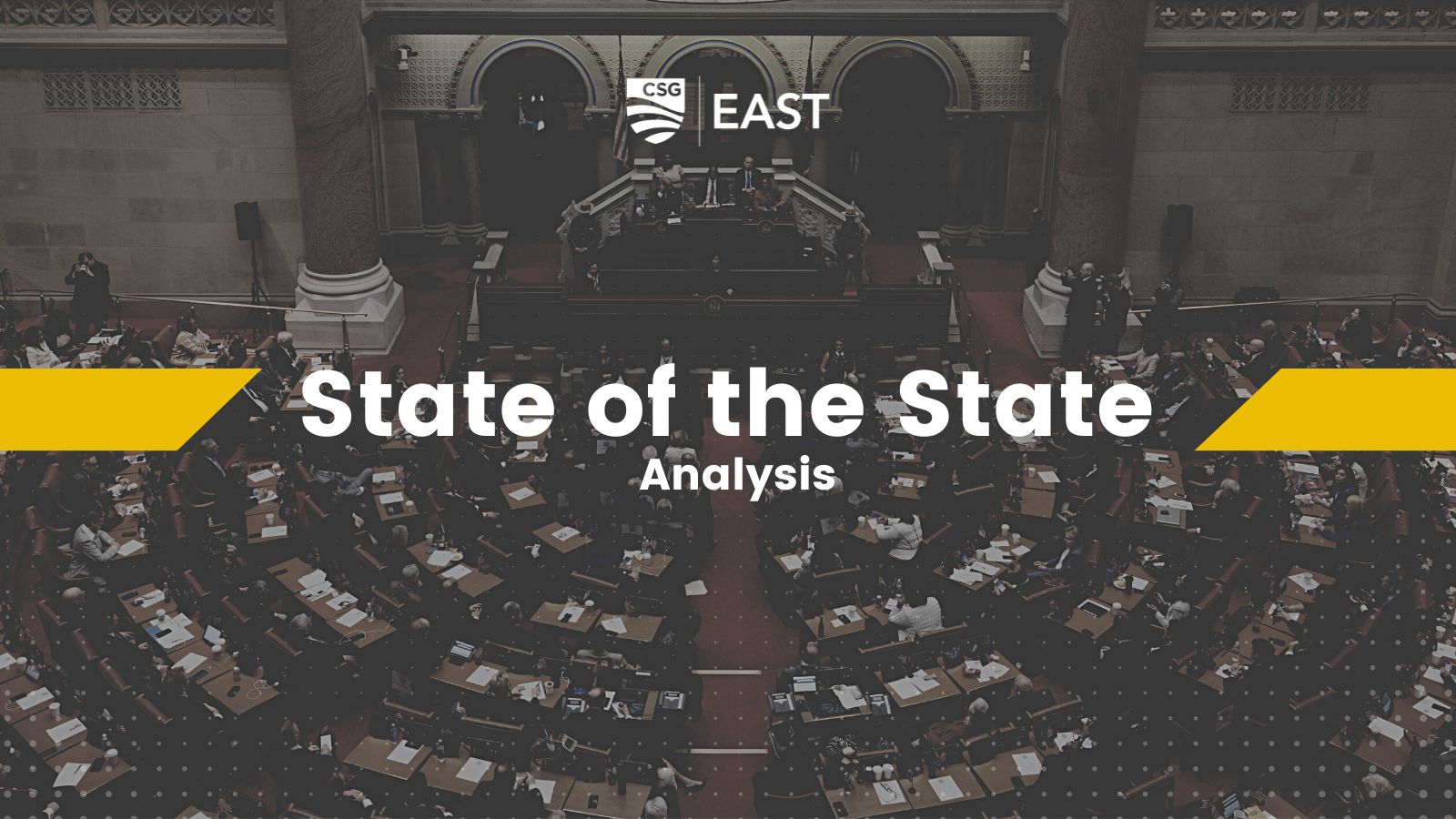Governor Kathy Hochul – now elected to serve her first full term as chief executive of New York – delivered her 2023 State of the State Address on Tuesday, a little over a week after her inaugural address. In her speech to the audience of legislators, state leaders, and press gathered in the Assembly Chamber, Hochul outlined her plans for the next four years, putting special emphasis on public safety.
My number one priority has always been, and will always be, to keep New Yorkers safe.
Hochul highlighted New York’s efforts on gun violence prevention, including its red flag law, raising the minimum age to 21 to purchase semi-automatic weapons, and launching a “first-in-the-nation, nine-state task force on illegal guns,” which she said took more than 10,000 illegal guns off New York streets in 2022.
She also addressed bail reform, which she called the most controversial aspect of the public safety discussion.
While standing by the goal that “the size of someone’s bank account should not determine [bail decisions]” and claiming that bail reform is not the primary driver of a national crime wave, she also said that “the bail reform law as written now leaves room for improvement” – a line that received much less applause from fellow Democrats in the chamber.
Hochul also touched on the State’s Gun Involved Violence Elimination initiative, cooperation with New York City to boost office presence on subways, and an expansion of the State Police Community Stabilization Units to 25 communities around the Empire State.
But, there are other important ways to address crime too, she said, pointing to record investments in education, housing and mental health.
…since the onset of the pandemic, more than one in three New Yorkers have sought mental health care, or know someone who has. I’m declaring that the era of ignoring the needs of these individuals is over.
Hochul also made mental health a major focus of her annual address, outlining a multi-year, $ 1 billion plan to fill gaps in mental healthcare.
The multi-year plan includes:
increasing operational capacity by 1,000 beds for inpatient psychiatric treatment
creating 3,500 units of housing to serve New Yorkers with mental illness
increasing insurance coverage/reimbursement rates for mental health services
dramatically expanding outpatient services
creating systemic accountability for hospital admissions and discharges to better address the needs of individuals suffering with mental illness.
According to Hochul, “nearly 3,200 New Yorkers struggling with severe mental illness or addiction are living on the street and subways.”
She also pledged to address the ongoing opioid epidemic by working with federal and local partners to stop the flow of illicit drugs and address new deadly additives like xylazine, expanding the availability of test strips and Naloxone, and creating a new interagency task force to examine “every possible solution.”
…you can’t really talk about quality of life without talking about cost of living.
Highlighting affordability issues in New York – one of the most expensive metro areas in the nation – Governor Hochul explained the importance of Housing availability and affordability to the state’s future.
Hochul’s administration outlined New York’s housing crisis with stark data, in a recent press release:
More than half of New York renters are rent-burdened, meaning that they pay more than 30 percent of their income on rent – the second-highest rate in the nation.
In the New York City metro area, rents have risen 30 percent since 2015 and home prices have risen 50 percent over the same period.
In her speech, Hochul said that New York had, in the previous 10 years, “created 1.2 million jobs – but only 400,000 new homes.”
“When it comes to New York City, other metro areas are creating new housing at two to four times the rate that we are,” she said. “Boston’s rate is almost double. Washington D.C., triple. Seattle, four times.”
To address the crisis, she outlined a plan to “build 800,000 new homes over the next decade to meet the historic shortage, and support New York renters and homeowners.”
Hochul’s plan leans heavily on a new New York Housing Compact, a comprehensive, multi-pronged strategy that includes local participation requirements and incentives to achieve housing growth in every community.
Hochul’s plan specifically targets transit corridors for increased density by requiring municipalities with MTA rail stations to locally rezone for higher density residential development.
…any municipality with a train station will rezone the area within a half-mile of the station, to allow for the creation of new housing… within the next three years.
Hochul’s agenda also includes plans to reduce emissions, tying sustainability back into the theme of affordability.
In addition to what she called a “nation-leading Cap-and-Invest program,” Hochul charted an ambitious plan to decarbonize and better insulate buildings in New York, echoing previous plans rolled out in New York City and Ithaca.
Building decarbonization – which CSG East has covered before – involves switching from natural gas or fuel oil to electric heat pumps for space and water heating, and installing induction stoves. It also entails weatherizing and retrofitting the aging housing stock, of which three-quarters was constructed before 1940.
The EmPower Plus program announced in the address will help low-income families retrofit their homes, Hochul said, by adding insulation, upgrading appliances, and switching from fossil fuels to clean electric heating systems. Homes that electrify will be eligible for a first-in-the-nation Energy Affordability Guarantee, a promise that they will never spend more than 6 percent of their income on electricity.
Hochul also proposed a plan to end the sale of any new fossil-fuel-powered heating equipment by 2030.
buildings are the largest source of emissions in our state, accounting for a third of our greenhouse gas output, as well as pollution that aggravates asthma and endangers our children.
You can read the full text from the New York State of the State address here.
More info on the Hochul administration’s plans for 2023, as outlined in the speech, have been published in a 276-page digital book, with key sections broken down in related press releases.
The post New York State of the State Analysis appeared first on CSG ERC.




